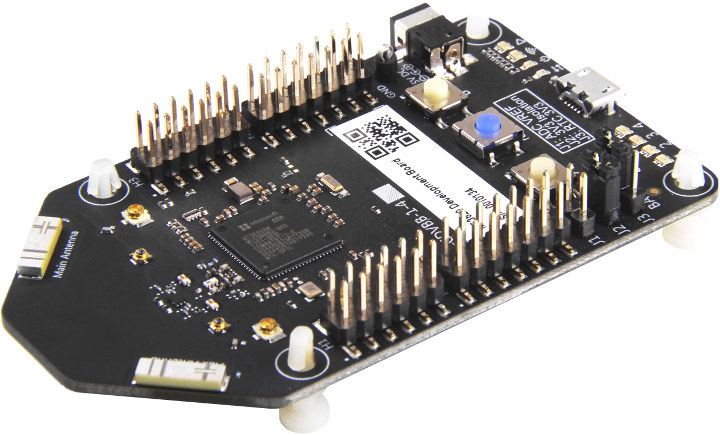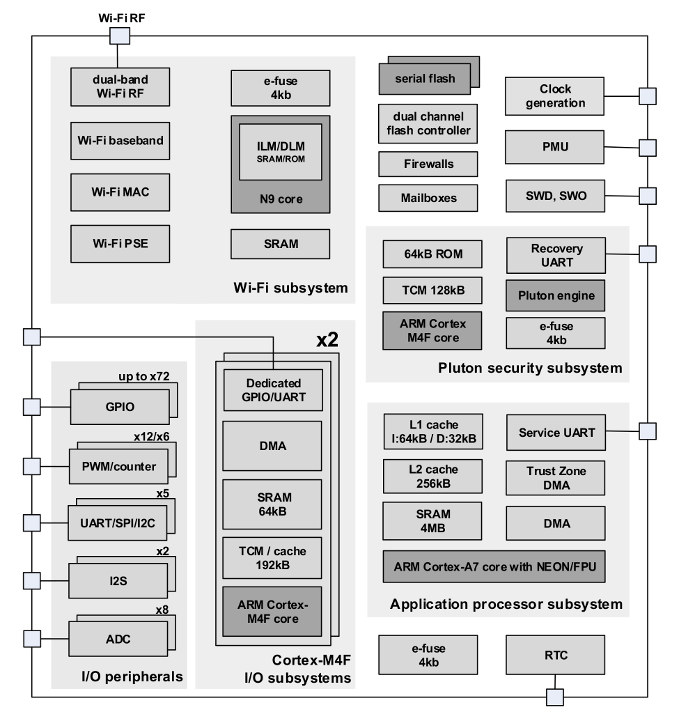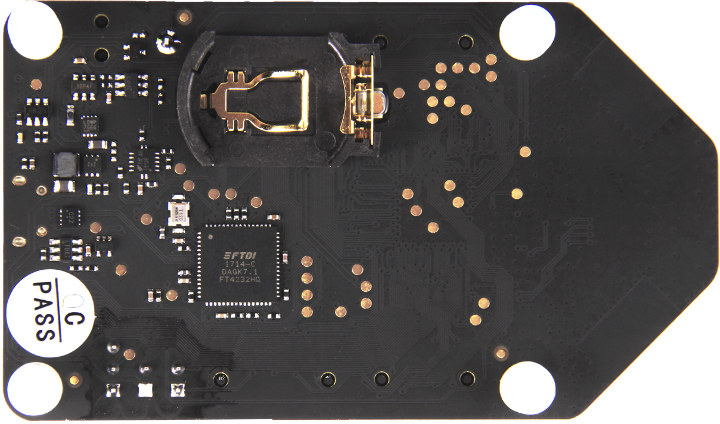Microsoft unveiled Azure Sphere solutions last month in order to provide a complete secure IoT solution from the hardware to the cloud with three main components: a secure MCU, Linux based Azure Sphere OS, and Azure Sphere Security (Cloud) Service.
The company already stated Mediatek MT3620 would be the first Azure Sphere compliant MCU, and today Seeed Studio has announced MT3620 development board for Azure Sphere is up for pre-order for $84.90 with a $5 deposit, and shipping scheduled for the end of September.

Preliminary specifications of MT3620 development board for Azure Sphere:
- WiSoC – Mediatek MT3620AN single core Arm Cortex-A7 processor @ 500 MHz, dual core Arm Cortex-M4F real-time core, Pluton security sub-system, and WiFi.
- System Memory – Over 5MB of embedded RAM, split
among the various cores (4MB for Arm Cortex A7 core) - Storage – 2x 8MB dual channel quad SPI (16MB in total)
- Connectivity – Dual band 802.11 a/b/g/n WiFi 1T1R with main and aux PCB antennas, and two u.FL connectors
- USB – 1x micro USB port for programming (via FTDI FT4232HQ Hi-Speed Quad USB UART IC)
- Expansion – 2x 14-pin headers + 2x 12-pin headers for I/Os (ADC, GPIO, I2C, I2S, PWM, SPI, UART)
- Misc – RTC battery holder, 2x user buttons, reset button. 4x user LEDs, 4x status LEDs (power, wifi, etc…), 3x jumper for ADC Vref, 3.3V isolation, and RTC 3V3
- Power Supply – 5V via power barrel or micro USB port
- Dimensions – TBD
If there’s really only about 4MB RAM available for the Cortex A7, Microsoft really stripped down the Linux kernel as much as possible. For reference, OpenWrt normally requires at least 16MB RAM to run properly.
You’ll need a Windows 10 PC with the latest Windows Updates to work with To use MT3620 Dev Board for AzureSphere, as well as the upcoming Visual Studio Tools for Azure Sphere, which will include application templates, development tools and the Azure Sphere software development kit (SDK).
At this stage, documentation is really limited, but you’ll find Mediatek MT3620 product brief/datasheet on the product page.

Pre-ordering the board requires a $5 deposit for now, and you’ll be sent an email with more details to complete the order once the board is ready for shipping. It should also be noted that since Microsoft is a US company, some countries/regions are excluded: Syria, North Korea, Sudan, Cuba, Iran, Kosovo, the Central African Republic, EquatorCrimea, and China. Seeed Studio is also developing a MT3620 Shield that will interface with Grove modules.

Jean-Luc started CNX Software in 2010 as a part-time endeavor, before quitting his job as a software engineering manager, and starting to write daily news, and reviews full time later in 2011.
Support CNX Software! Donate via cryptocurrencies, become a Patron on Patreon, or purchase goods on Amazon or Aliexpress





